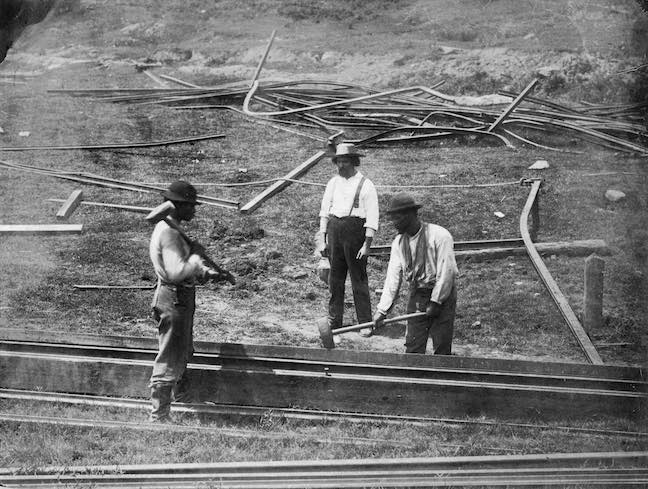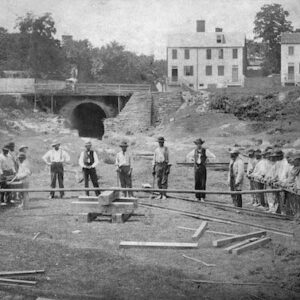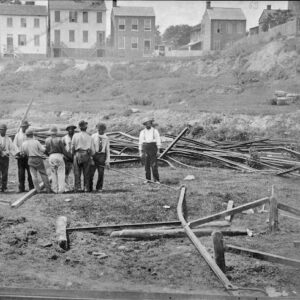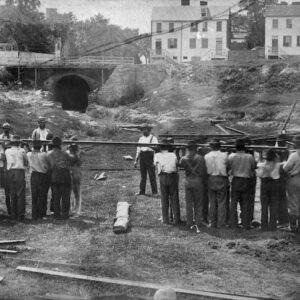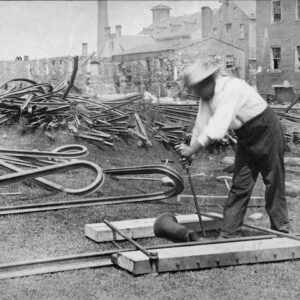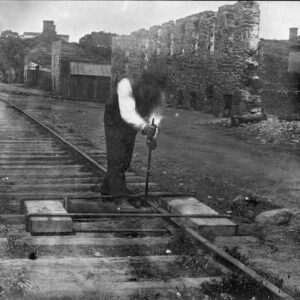| Credit: | by Russell (Andrew J.) |
|---|---|
| Date: | 1863.03-04 |
| Negative Size: | 6.5 in. x 8.5 in. |
| Equipment: | rail; sledgehammer |
| Locations & Lines: | Alexandria VA; Virginia |
| Military Units: | US Military Railroads (USMRR); US Army |
| Sources: | J. Paul Getty Museum; Lehigh University; Library of Congress |
$5.99
File Details: AAEQm, 600 DPI, TIFF, Original Photograph, 17.6 Mb
Image ID: AAEQ
Haupt, United States Military Railway Department. Construction And Transportation. No. 66.
Haupt, Photographs Illustrative of Operations In Construction And Transportation, As Used To Facilitate The Movements Of The Armies Of The Rappahannock, Of Virginia, And Of The Potomac, Including Experiments Made To Determine The Most Practical and Expeditious Modes To Be Resorted To In The Construction, Destruction and Reconstruction Of Roads And Bridges. No. 66–When the rail is so much bent that it cannot be straightened cold, it should be thrown out, and no time lost in attempting to improve it. When the track is laid, these rails should be carried to a convenient place where a furnace can be prepared for heating them. Two parallel walls of brick, stone, or even of clay, with bars laid across to hold the wood or coal, will answer for a furnace. When heated, the rails are laid upon a straightening table and hammered until the bends are removed, as shown in No. 66, after which the rail is cooled before removal by pouring on water.
The straightening table is prepared in a very simple manner, by taking a piece of timber 12 inches square, and as long as a rail, placing two rails base downward on the top surface of the timber, and another rail base upwards between the first two; the whole being firmly spiked, the base of the top rail forms the plane surface on which the rails are straightened.

